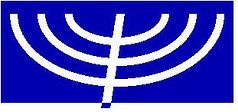Here’s the d’var Torah which Rabbi Rachel offered yesterday at CBI for parashat Vayikra.
In cheder, the Hebrew elementary school of late 19th and early 20th-century eastern Europe, boys began learning Torah at the age of five. They began with Vayikra, which we call in English “Leviticus.” (They’d go on to learn mishna at the age of seven, and Talmud once they had mastered the mishna.)
We have a five year old. And I cannot for the life of me imagine him reading Torah fluently at this age. But setting that aside, I am perennially fascinated by the fact that the cheders of old — and contemporary schools which follow the cheder model, mostly in the Hareidi / ultra-Orthodox world — begin their studies of Torah not with בְּרֵאשִׁית בָּרָא אֱלֹהִים, “as God was beginning to create the heavens and the earth…”
They begin with וַיִּקְרא אֶל-מֹשֶׁה , “and God called to Moses” — which is to say, with Leviticus, the book of the Torah which I suspect most modern Jewish adults like the least. Sprinkled blood and burnt kidneys and laws about nakedness — it couldn’t be further from the post-sacrificial Judaism we know and cherish.
Many scholars and rabbis and literary critics make the case that Torah has a chiastic structure. In a book with a chiastic structure, the most important part is not the beginning or the end, but what’s in the middle. Leviticus is in the middle of the Torah: ergo it’s the most important part.
The scholar Mary Douglas argued that Leviticus too has a chiastic structure, which tells us that the most important material in Leviticus is in the middle: the holiness code, which exhorts us to be holy as Adonai our God is holy. Leviticus is the heart of Torah, and holiness is the heart of Leviticus.
And what is at the heart of the quest for holiness? וְאָהַבְתָּ לְרֵעֲךָ כָּמוֹךָ: אֲנִי ה׳: “and you shall love your neighbor, your ‘other,’ as yourself: I am Adonai.” (Leviticus 19:18.) It may not be exactly the verse in the dead-center middle of the Torah, but it’s close.
Here’s Martin Buber on that verse:
“Love your neighbor as yourself; I am Adonai” (Leviticus 19:18). There is a Chasidic interpretation of the last words of this verse: “I am Adonai.” – “You think that I am far away from you, but in your love for your neighbor you will find Me; not in his love for you but in your love for him.” He who loves brings God and the world together.
The meaning of this teaching is: You yourself must begin. Existence will remain meaningless for you if you yourself do not penetrate into it with active love and if you do not in this way discover its meaning for yourself. Everything is waiting to be hallowed by you; it is waiting to be disclosed and to be realized by you.
For the sake of this, your beginning, God created the world.
This seems a far cry from dismembering animals and burning them on the altar. But for Torah, there’s no disjunction between bringing a calf to the Temple to make up for having committed a wrong, and this lofty injunction to love each other and to be holy like Adonai. Our deepest values aren’t separate from the messiness of everyday living: they’re expressed in and through that messiness.
Today we’re beginning a new book of Torah, the one in the very middle. And today I’m beginning a new “book” in the unfolding Torah of my life — the book of being forty.
Forty’s a big number in Jewish tradition. The flood lasted forty days and nights; Moshe spent forty days and nights atop Sinai; the Israelites spent forty years wandering in the wilderness. In the rabbinic imagination, forty was a number of fruition and completion: for instance, the number of weeks between conception and birth.
Forty is an ending and a beginning. In antiquity, someone who was forty was getting on in years. Today, not so much. Perhaps I’m entering the Leviticus of my own life: I’ve lived for twoscore years, and I can hope for at least twoscore more. I’m at the beginning of the middle. Birth is a new beginning, and its holiness is obvious. Death is an ending, and its holiness too is clear. But where is the holiness of the great grey middle?
The holiness of the middle may be hidden, disguised beneath logistics and details. In Leviticus, those details are sacrificial, calves and turtledoves and grain offerings going up in smoke. In my life, those details are committee meetings and playdates, preparing for Passover and teaching Hebrew school. But Leviticus comes to teach us that there is holiness, and there is love, even here in the middle of things.
Maybe especially here in the middle of things.
Maybe especially here in the middle of things.
Today is the vernal equinox: another kind of middle, the mid-point between the shortest day of the year and the longest day of the year. Here in the Berkshires winter hasn’t quite let go, and warmth hasn’t quite begun; we’re balanced, like the planet, between one season and the next. A perfect time to look back on the winter now ending, to cherish its sweetness and let go of its bitterness, as we ready ourselves for Pesach and the coming spring. A perfect time for me to look back on the forty years now ending, to cherish their sweetness and let go of their bitterness, as I ready myself for whatever comes next.
May the Holy One of Blessing open our hearts to the continuing journey which is no longer beginning, and not yet ending, but contains beautiful twists and turns along the way. May we be enlivened as we begin this new chapter of Torah — and this new season. May we rejoice in finding the holiness hidden right here, in the middle.
